Performed by: Le Chung | May 24, 2024
(To Quoc) - The first Nguyen Dynasty antiques to be identified by numbers have contributed to improving the effectiveness of digitizing, preserving, and promoting the value of antiques in particular and the heritage of the Nguyen Dynasty and Hue culture in general.
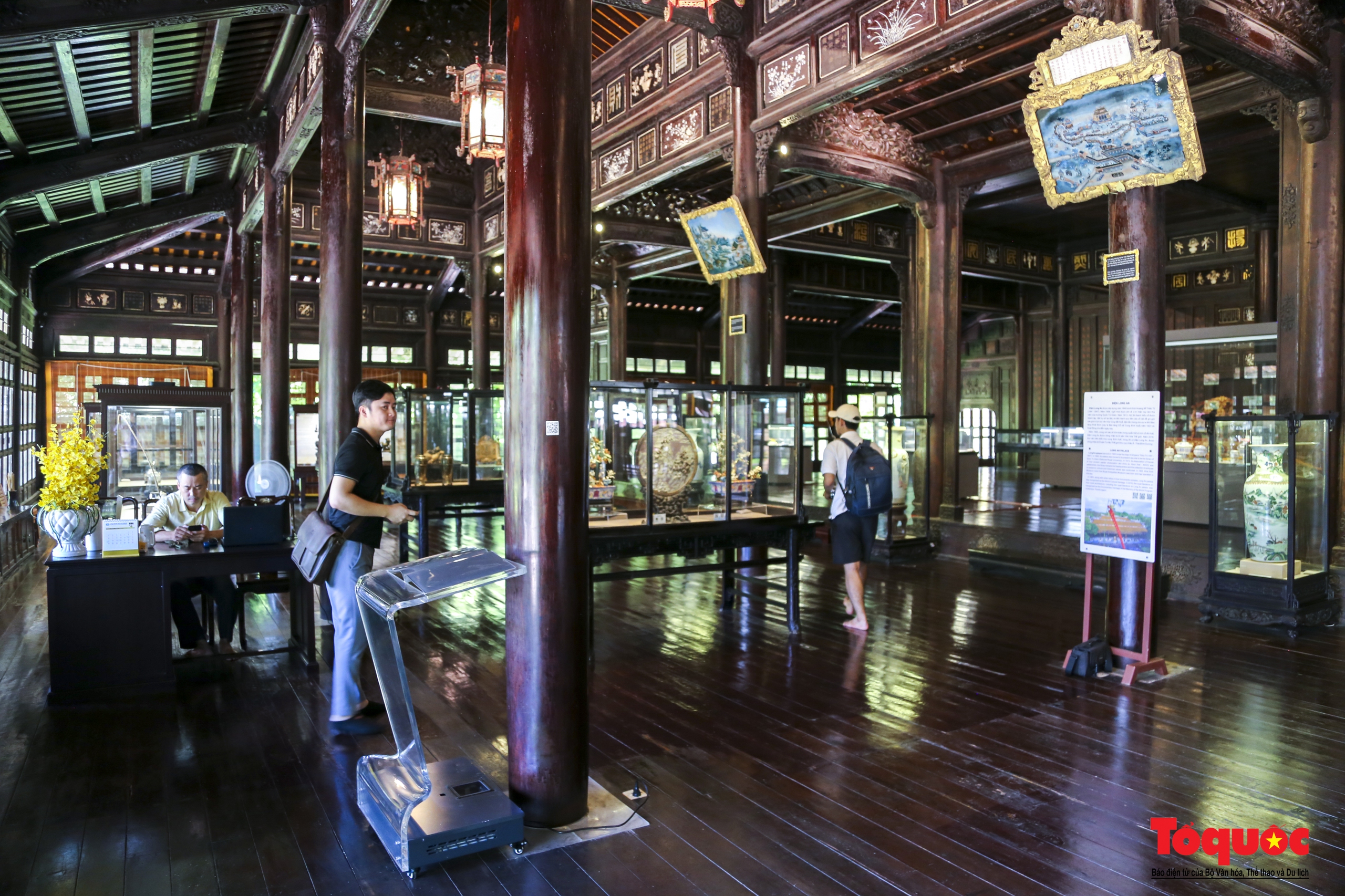
Recently, the Hue Monuments Conservation Center and the Thua Thien Hue Provincial Information Technology Center (Hue CIT) pioneered the integration of technology to identify for the first time 10 Nguyen Dynasty artifacts at the Hue Royal Antiquities Museum.
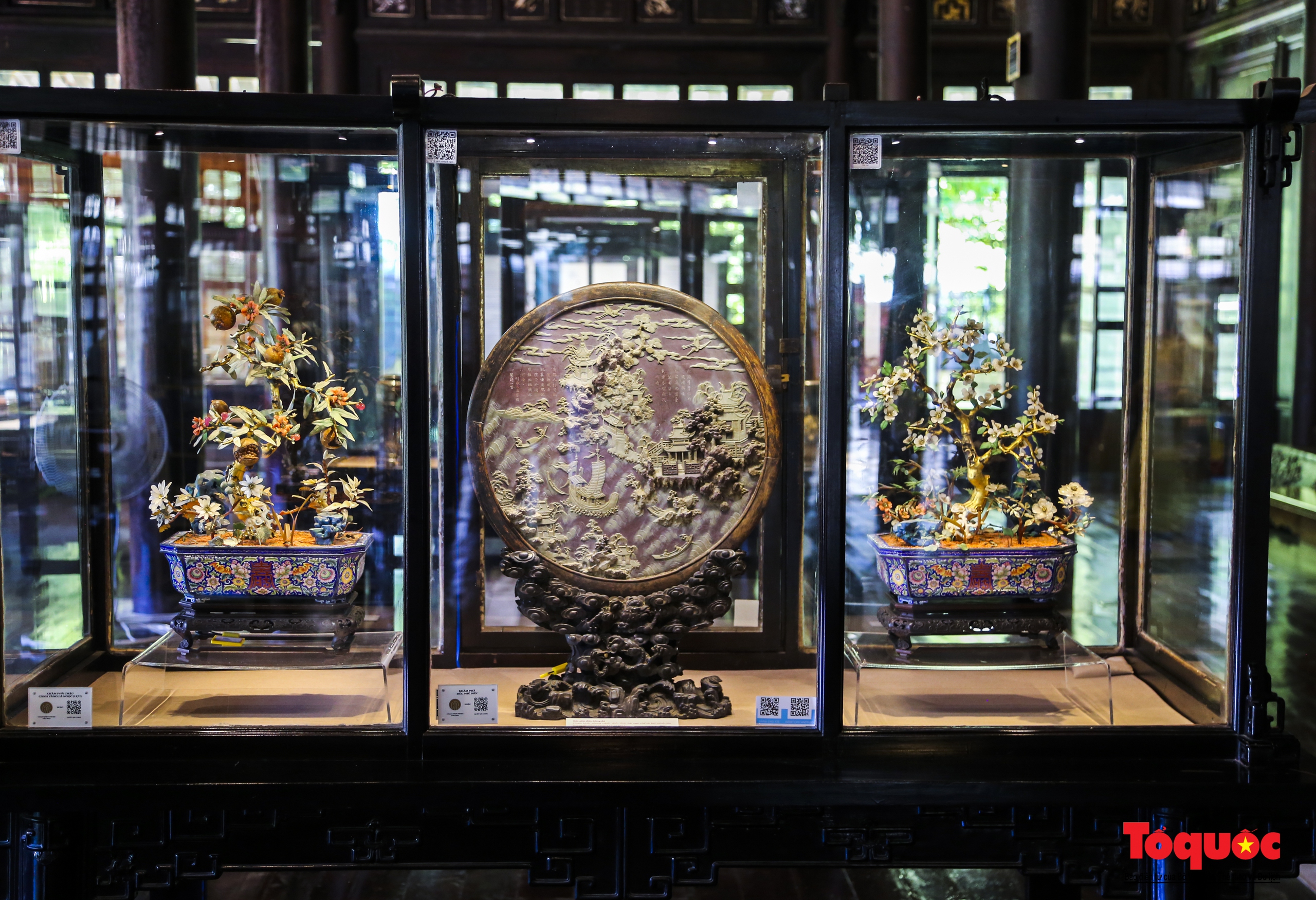
The antiques selected for identification are typical, valuable, and characteristic of the Nguyen Dynasty kings and mandarins, such as thrones, palanquins, and shoes (royal utensils used in daily life and ceremonies), gold branches and jade leaves (used for interior decoration), or a set of pink tattoos (a pastime)...
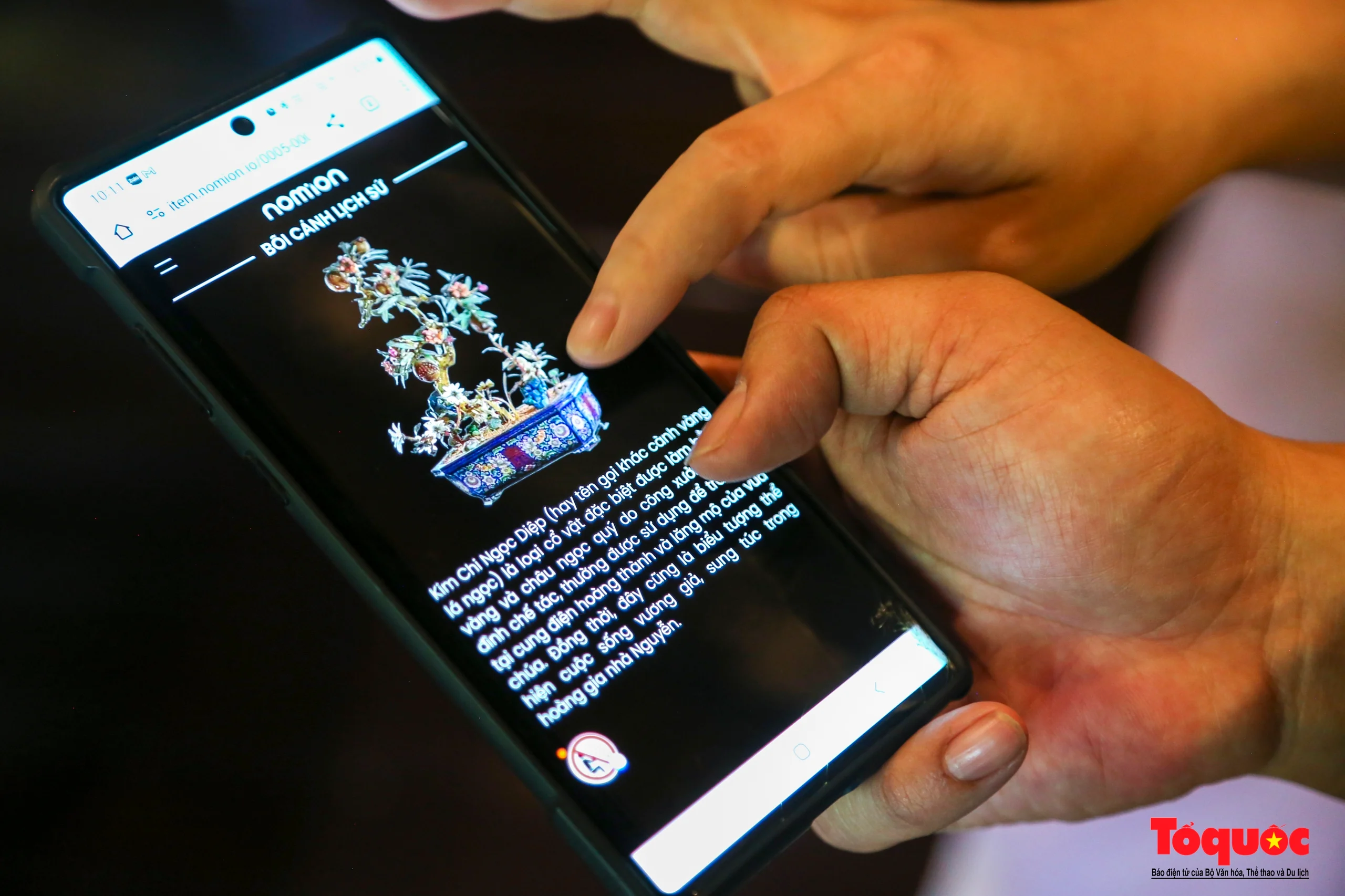
The artifacts are embedded with NFC chips and uniquely identified using Phygital Labs’ Nomion technology. From here, visitors can use their smartphones to interact with the Nomion NFC chip attached to the artifacts, opening up multi-dimensional interactions with all historical information, origin, cultural significance, 3D images, etc. of the artifacts.
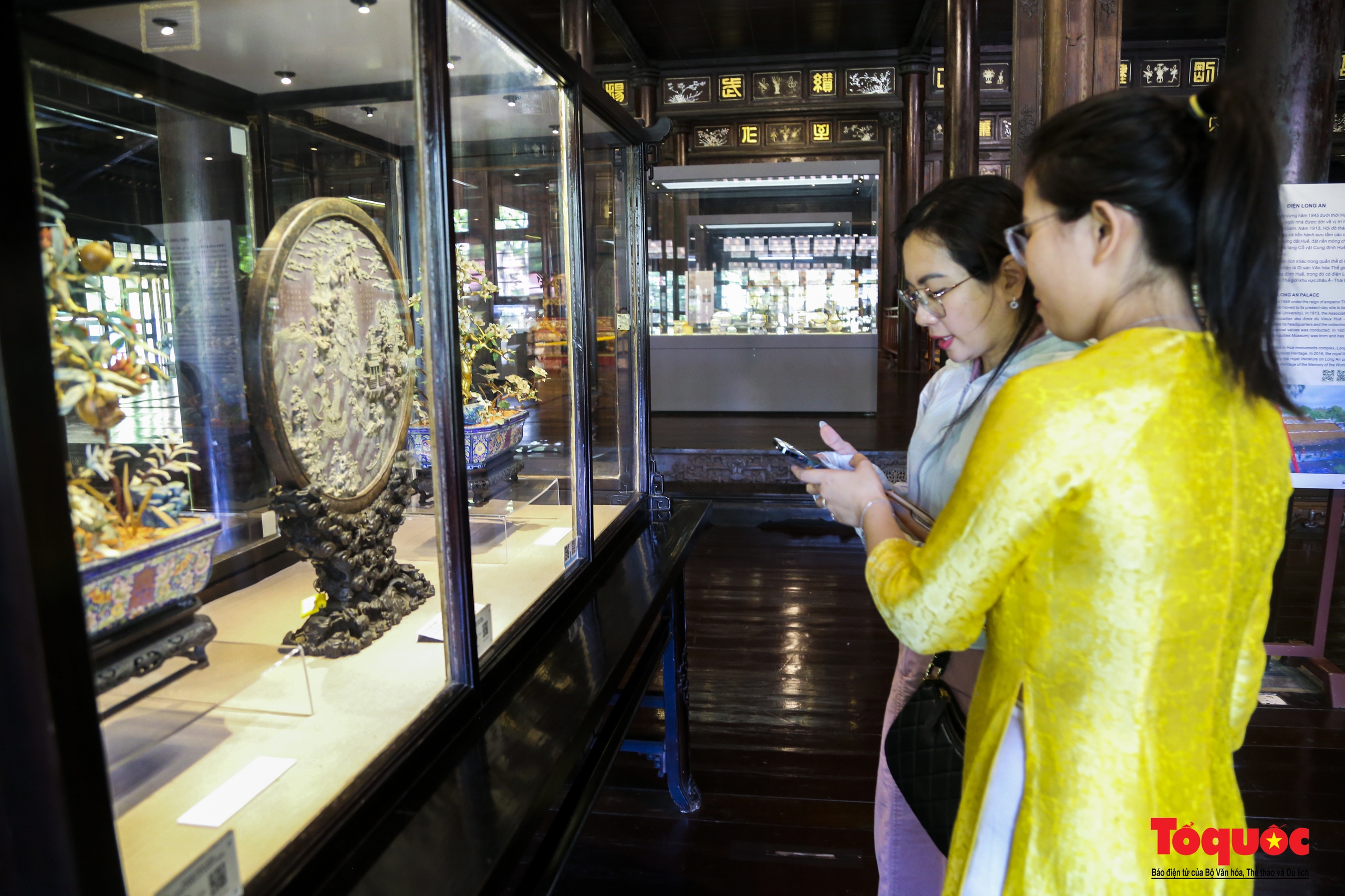
Staff at the Hue Royal Antiquities Museum guide visitors to use smartphones to experience and look up information related to antiquities that have been equipped with NFC chips for digital identification.
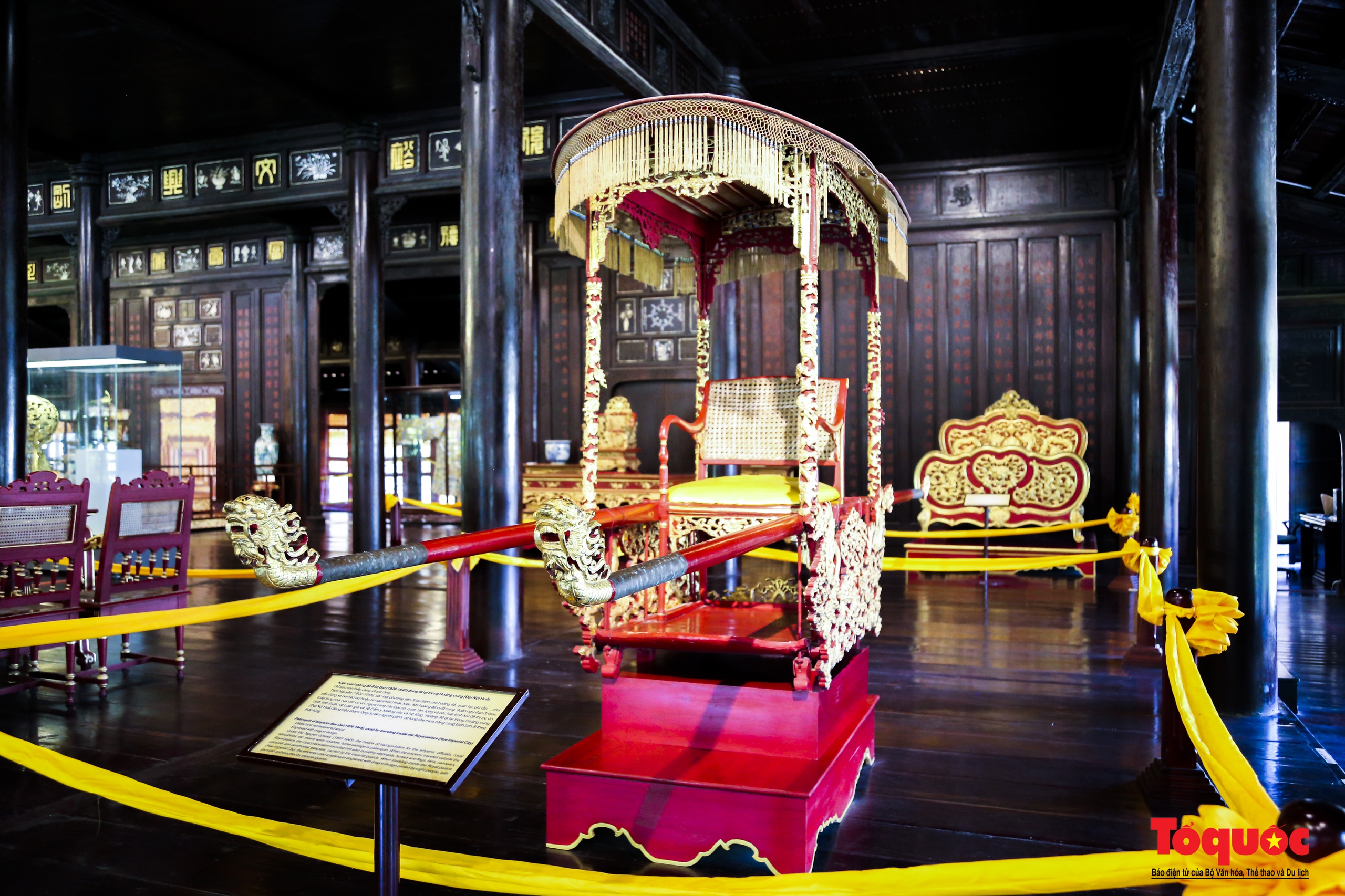
"The Nguyen Dynasty King's Palanquin", this is the palanquin with the carved design "Two dragons facing the sun", painted in red and gilded by King Bao Dai, used to travel within the Hue Imperial City during the Nguyen Dynasty. The palanquin consists of a chair with carved dragons and clouds, with a roof, placed on a long frame with two main colors: gold and red. The two arms of the palanquin are the image of a dragon symbolizing the king, with the dragon's head in front and the dragon's tail at the end of the palanquin.
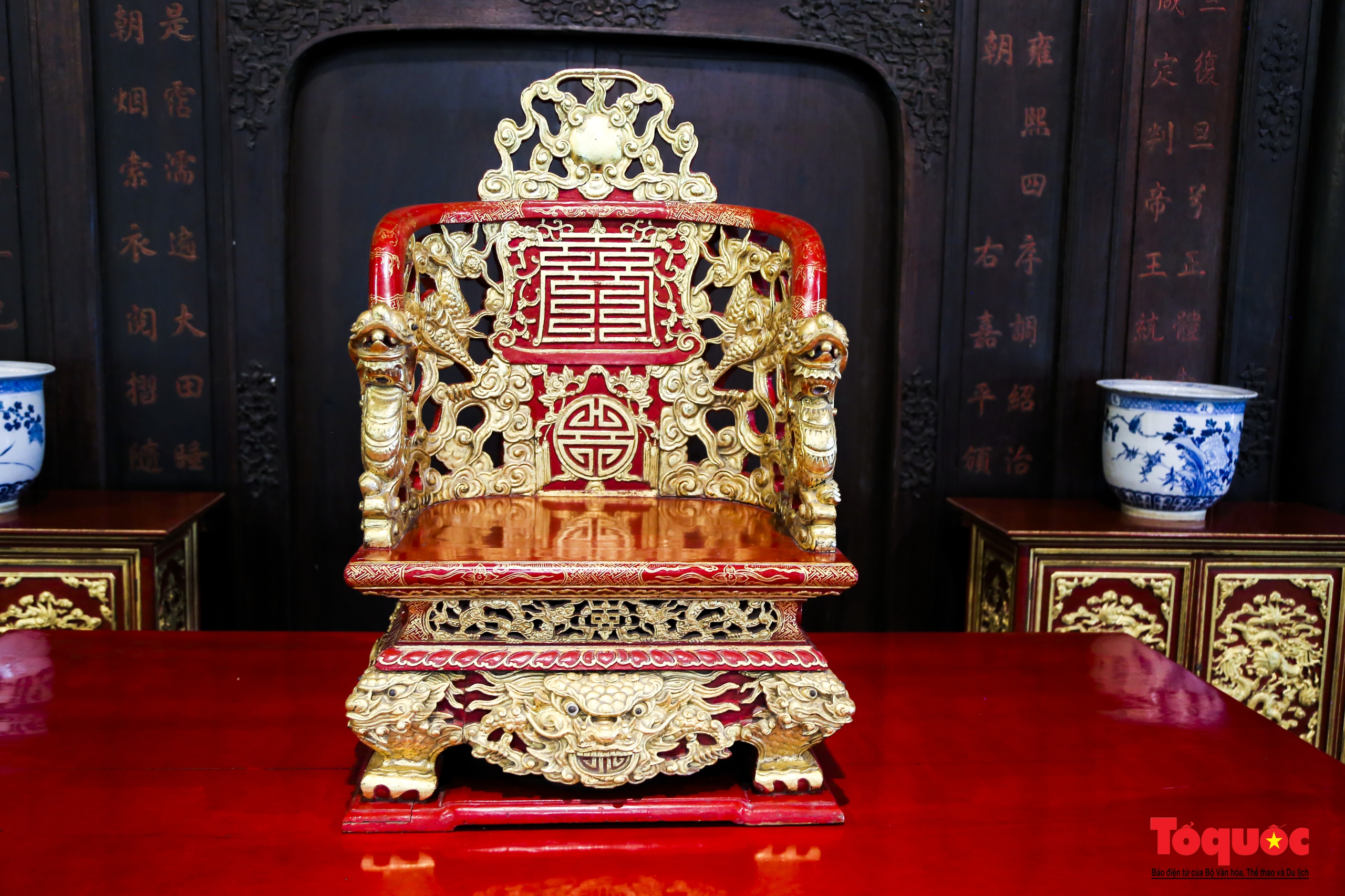
"The Nguyen Dynasty Throne" - The throne is made of gilded wood. The upper part is an image of the sun on a stylized cloud background, representing the supreme power of the king. On the back of the throne are carved two longevity characters. The two arms of the throne are two dragons facing forward in a majestic posture of stepping on clouds, representing the power of the king. The lower part is the base, decorated with swastika patterns, rows of lotus petals, and a design of two dragons facing the longevity character. The throne's legs are carved with tiger-shaped symbols, dragon-mouth-long style, and phoenix patterns.
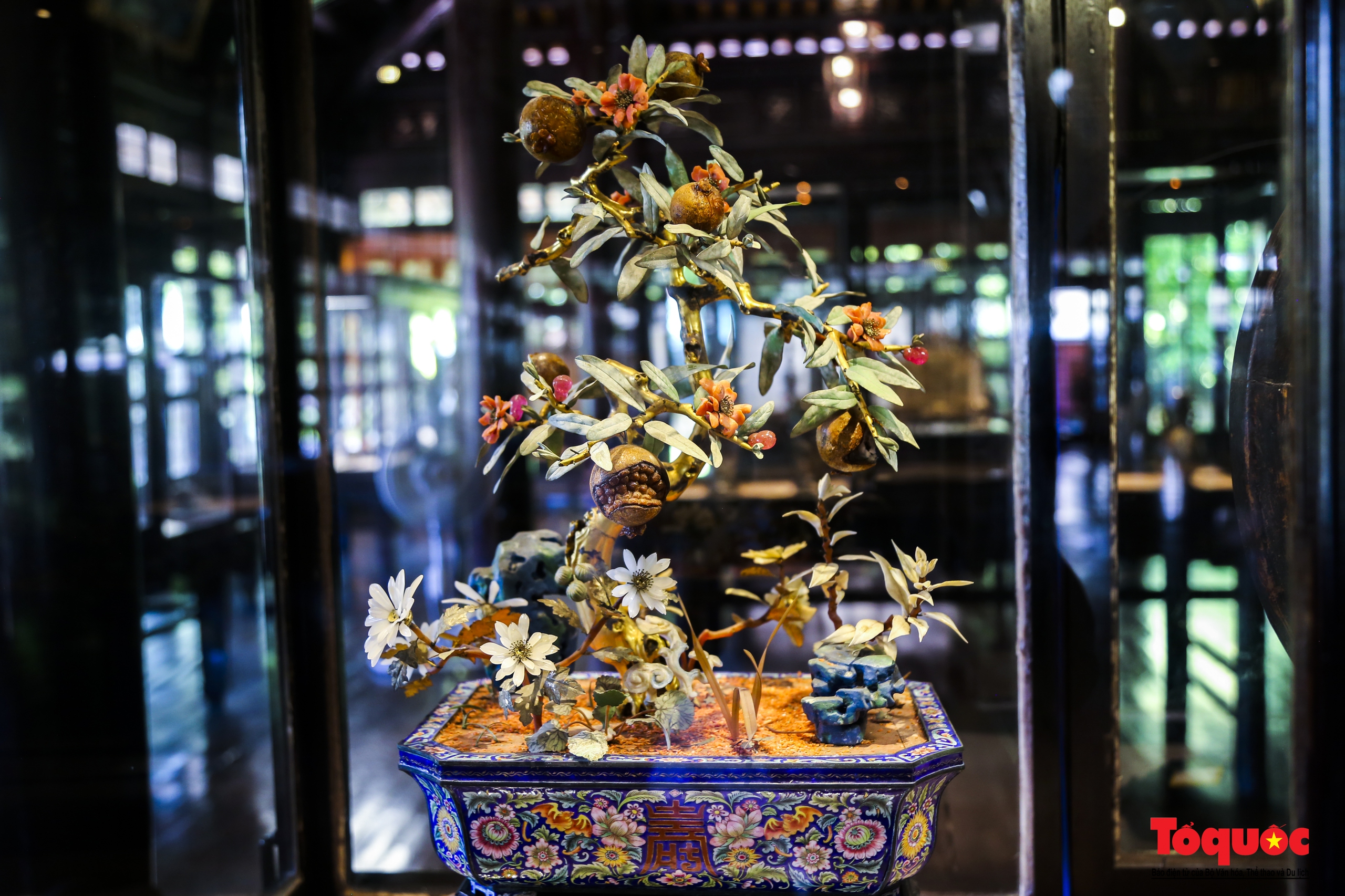
"Kim Chi Ngoc Diep" or Golden branch and jade leaf pot (pomegranate tree) with gilded wooden trunk, red gemstone fruit, light green leaves placed in enamel pot, crafted by the royal workshop to decorate the palaces and tombs of kings. According to the concept of East Asians, pomegranate tree symbolizes prosperity and many children and grandchildren.
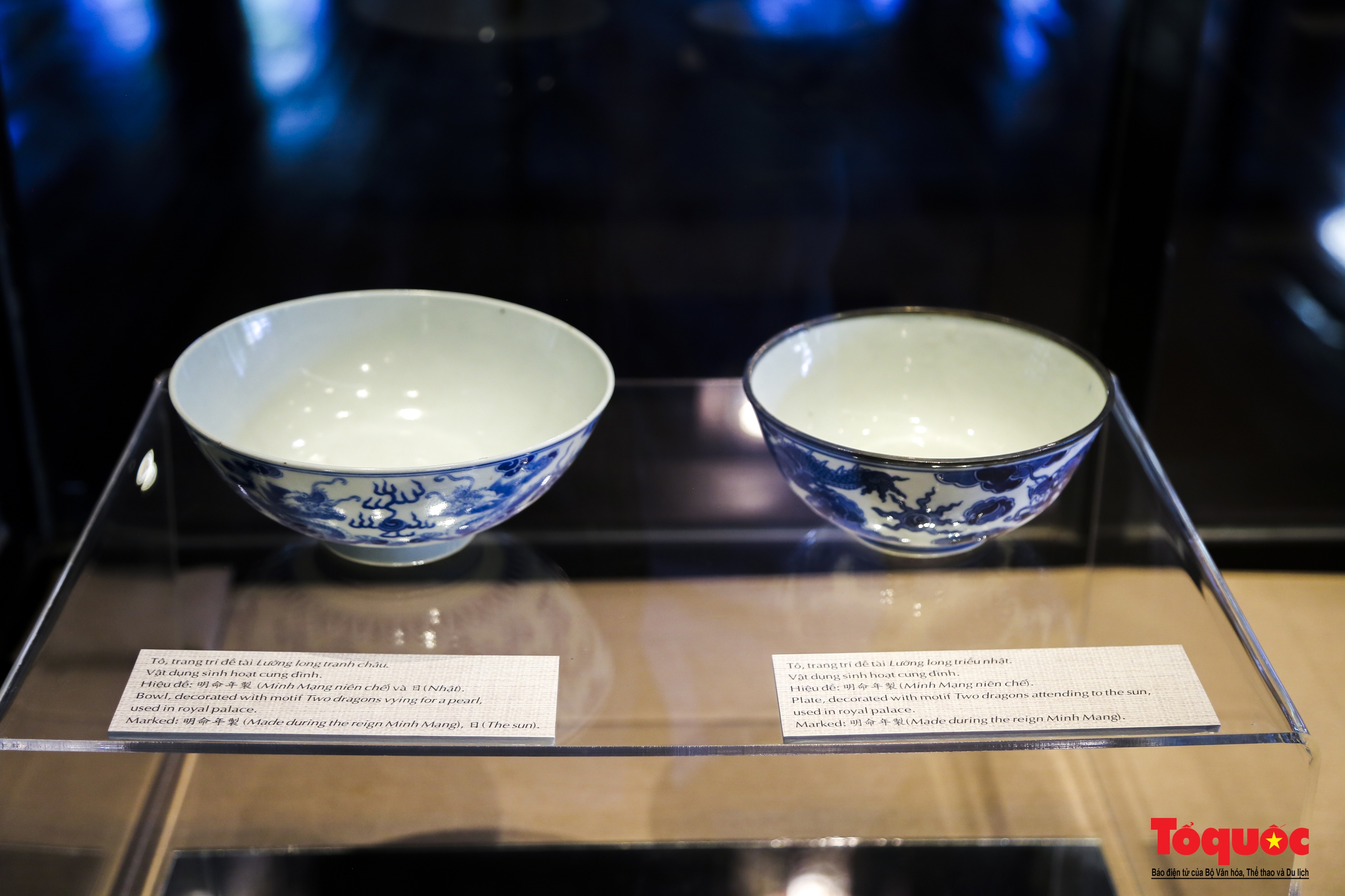
The name used to refer to porcelain items ordered by Vietnamese people (kings, mandarins, commoners) at Chinese kilns from the second half of the 17th century to the early 20th century, with specific requirements for design, color, decorative patterns, illustrated poems and inscriptions. White glazed porcelain bowl with blue and white paint, decorated with "two dragons facing the sun" and inscribed "Minh Mang nien tao" (made during the reign of King Minh Mang).
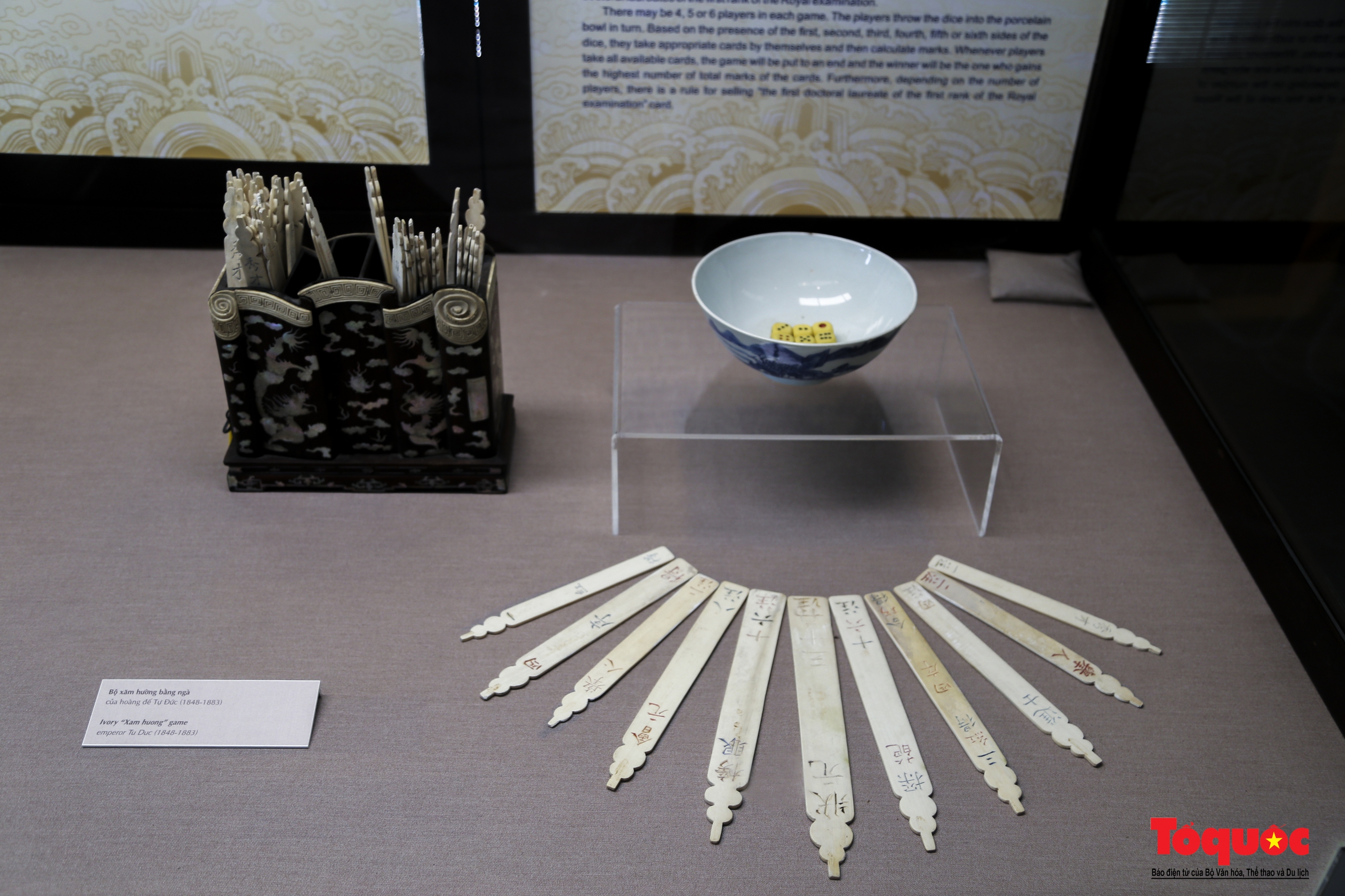
The ivory set of Xam Huong of King Tu Duc (1848 - 1883). "Do Xam Huong" is a traditional game with historical origins from the Nguyen Dynasty, perhaps this is the oldest and most ancient set of Xam Huong in Hue. The Xam Huong set includes: a box for Xam Huong cards, Xam Huong cards, 6 dice, and a dice shaking bowl. Playing "do Xam Huong" is to roll the dice to reserve cards engraved with Chinese characters with certain scores, recording the academic degrees in the ancient examination system such as: Bachelor, Bachelor, Doctor, First Prize Winner, Third Prize Winner, Second Prize Winner, and First Prize Winner. This is an elegant game, expressing the spirit of learning and the desire for academic achievements of the ancients. During his lifetime, Emperor Tu Duc loved this game very much.
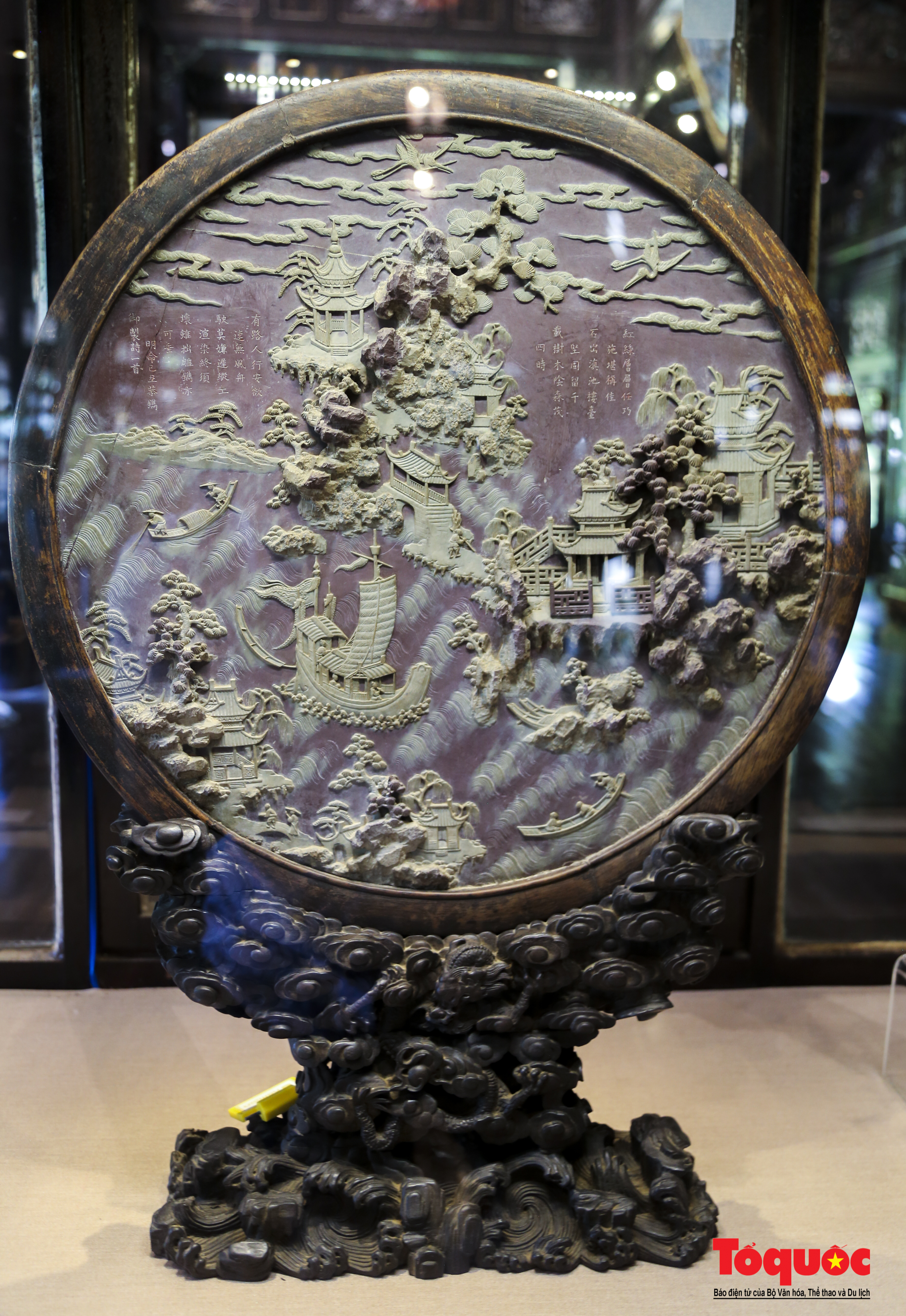
The relief carving of a beautiful scene was created in the sixth year of Minh Mang (1825). The front of the relief is carved with precious stones with pavilions, trees, birds, rivers, boats and two cranes holding scrolls flying in the clouds,... The back of the relief is engraved with an inscription praising the previous kings for finding the origin of the sages' teachings for future generations to follow in governing the country. King Minh Mang wrote this inscription to teach future kings to study and study hard to become wise kings.
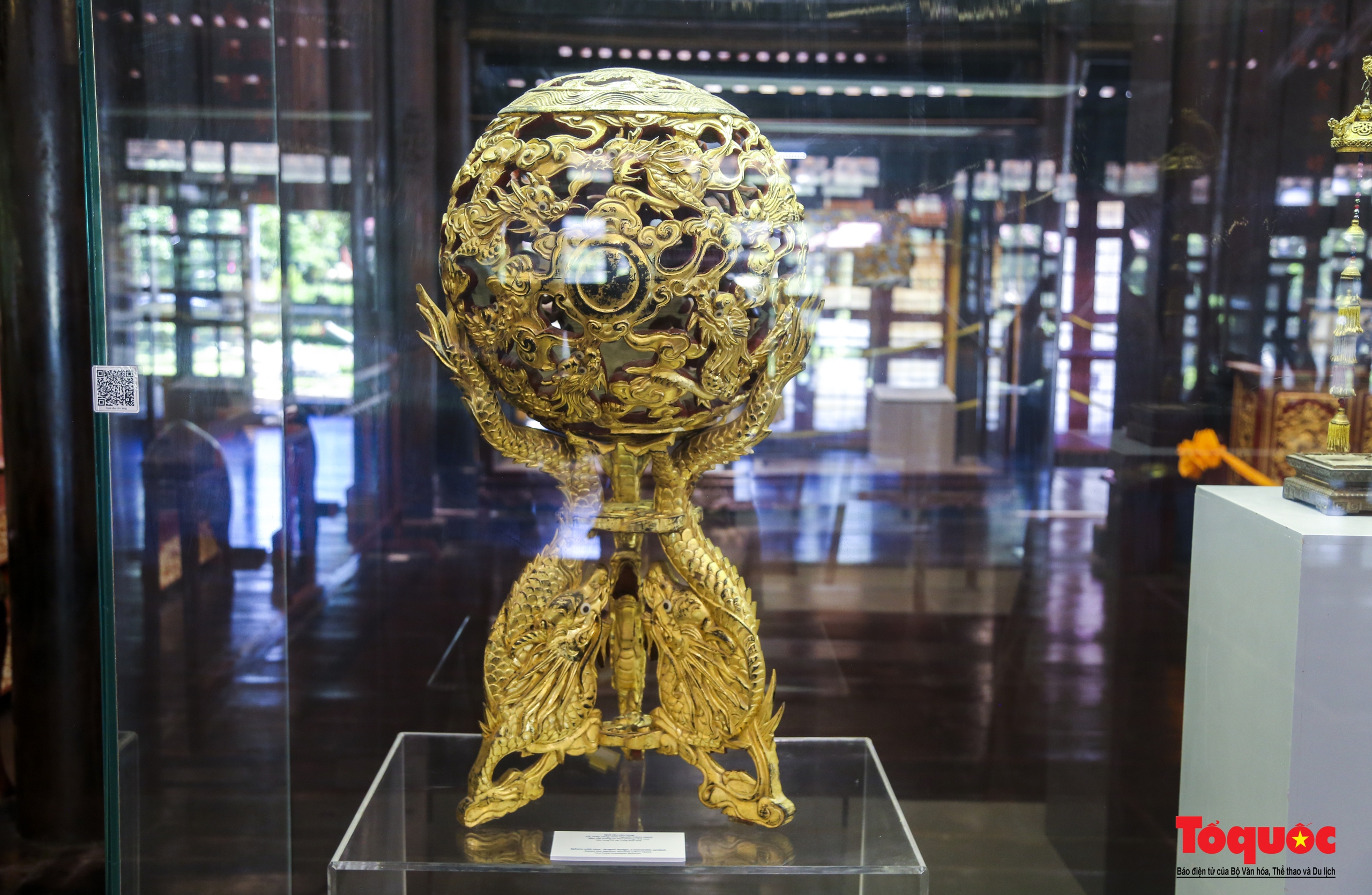
"The Nine Dragon Ball" is a unique work of art to praise the royal power and the throne of the Nguyen Dynasty emperors. It is carved with dragons and clouds, hollow, and used to decorate the royal palace. This work was created to present to King Khai Dinh on the occasion of his 40th birthday.
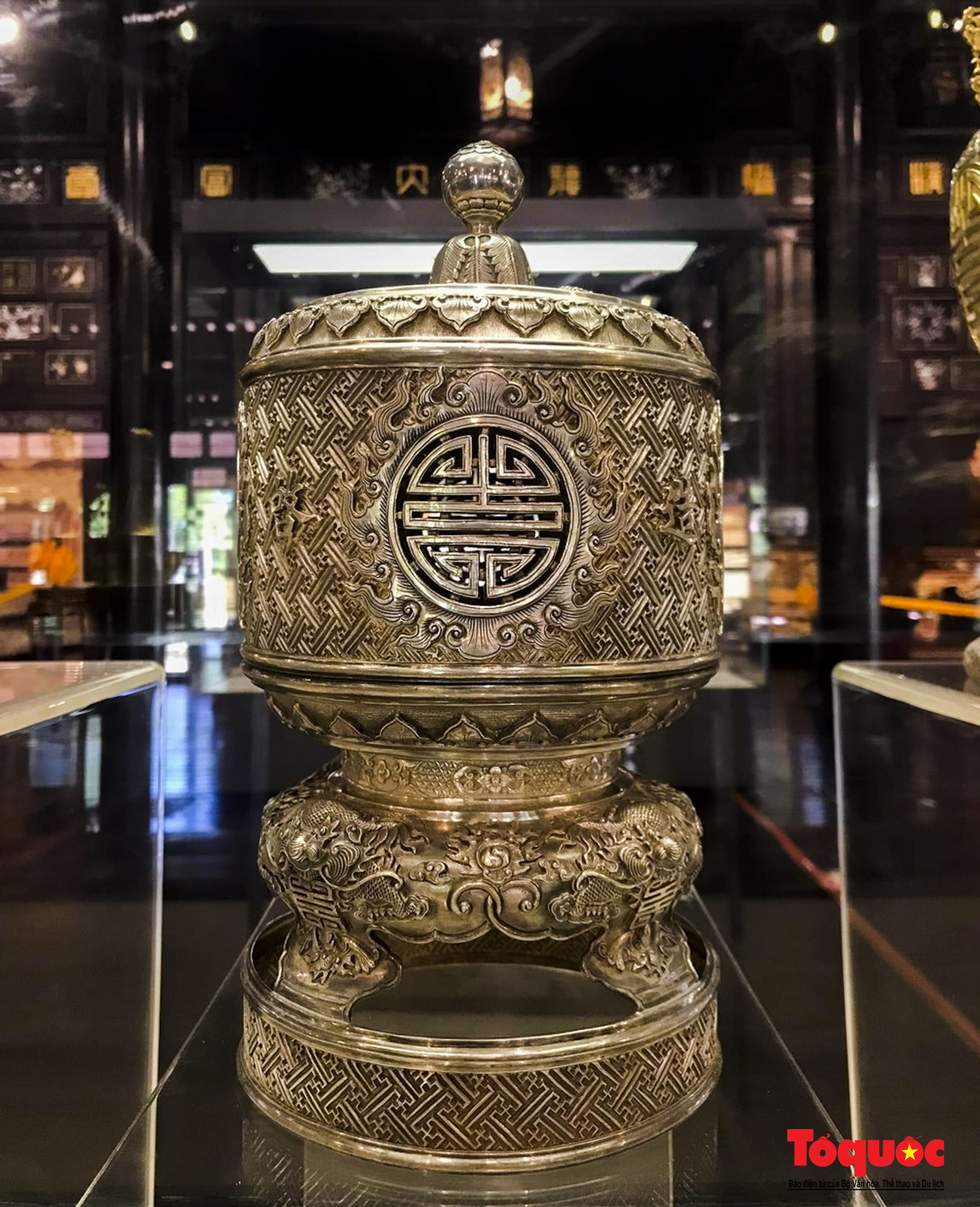
"Silver altar during the reign of King Khai Dinh (1916-1925)". According to the Hue Monuments Conservation Center, during the Nguyen Dynasty, the art of silver making was highly valued to serve court ceremonies and royal daily necessities. Each finished product was a masterpiece of craftsmanship. The silver altar, used to decorate the temples of the former emperors, was decorated with longevity characters, horizontal dragon faces, and the inscription "Khai Dinh nien tao" (made during the reign of King Khai Dinh).
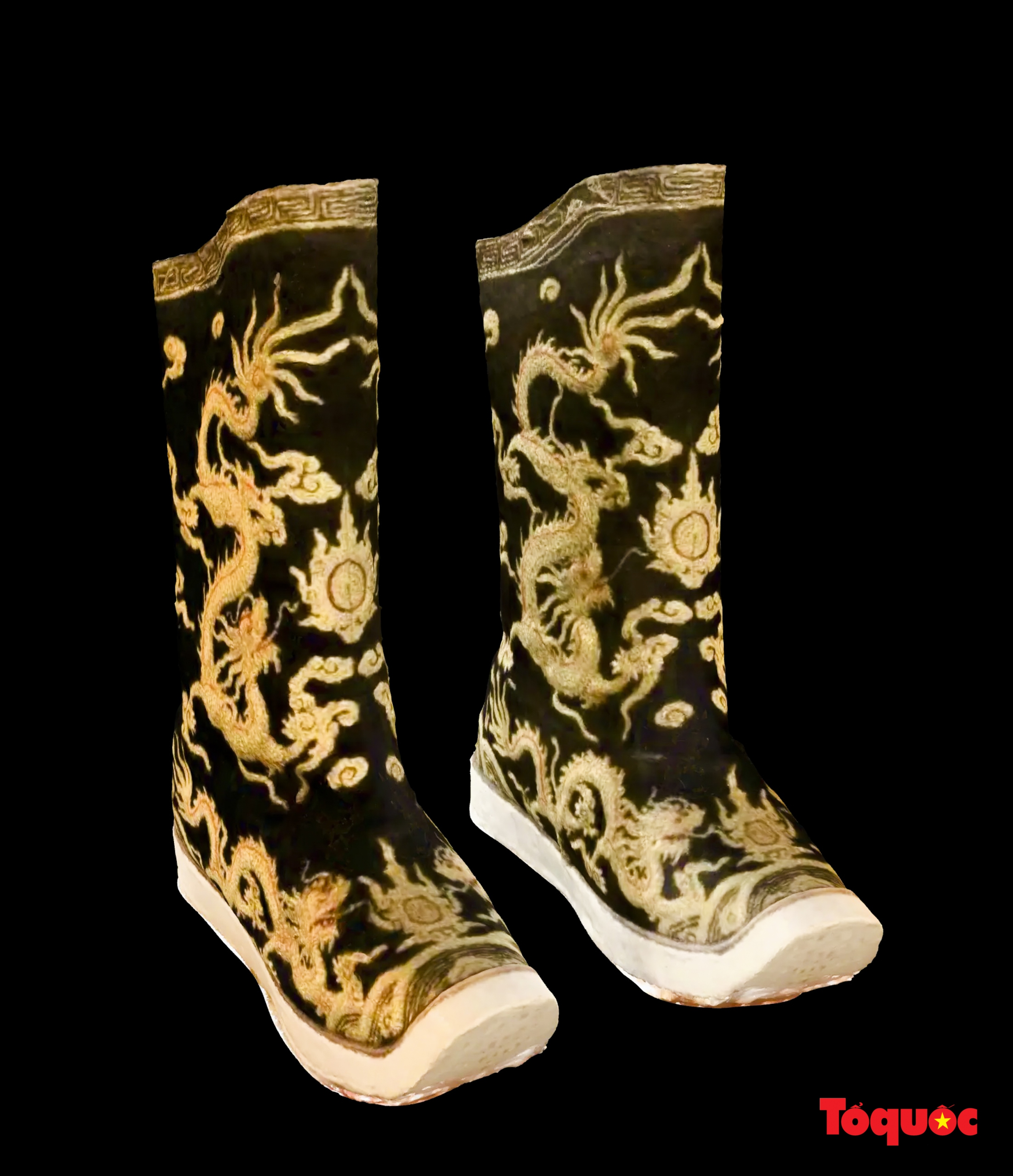
"Nguyen Dynasty's dragon and cloud embroidered sandals" - Sandals were one of the costumes that played an important role in expressing the power and authority of ancient kings. The royal family's sandals were all designed and presented by the Imperial Edict of the Imperial Palace. According to the book "Imperial Regulations of Dai Nam", every time they held court or held a grand banquet, the king wore sandals made of black silk, embroidered with dragons and clouds, water waves and flowers in gold thread, and lined with red silk. During the feudal period, the dragon was the symbol of royalty and majesty of kings, so dragons often appeared on the costumes of emperors.
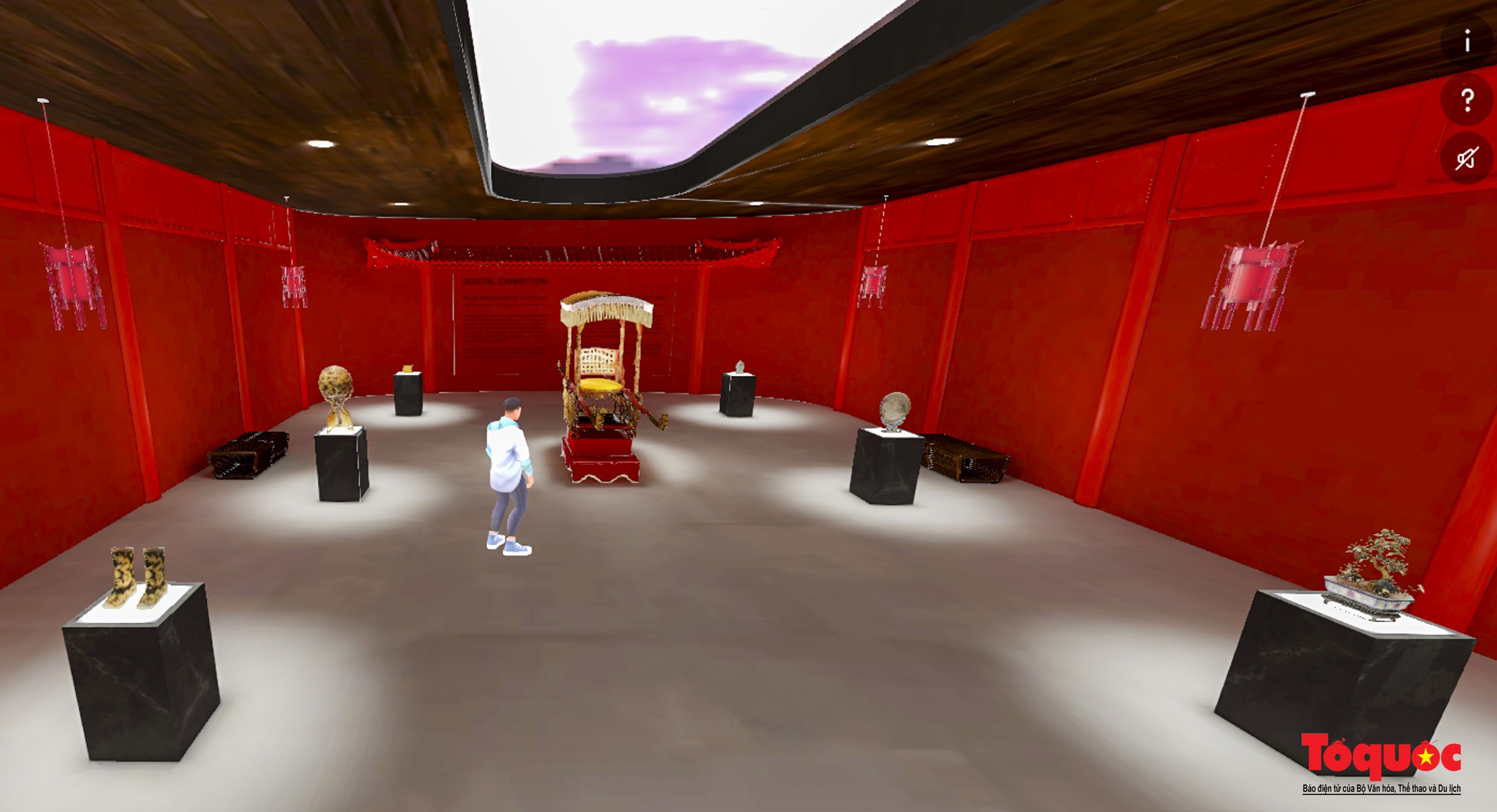
On this occasion, the Hue Monuments Conservation Center launched the first digital cultural exhibition space on metaverse at: museehue.vn. The digitally identified artifacts will be simultaneously displayed in the digital space for users to visit, admire the sharp 360-degree view of the item, and experience the fascinating historical story in a realistic historical and cultural space.
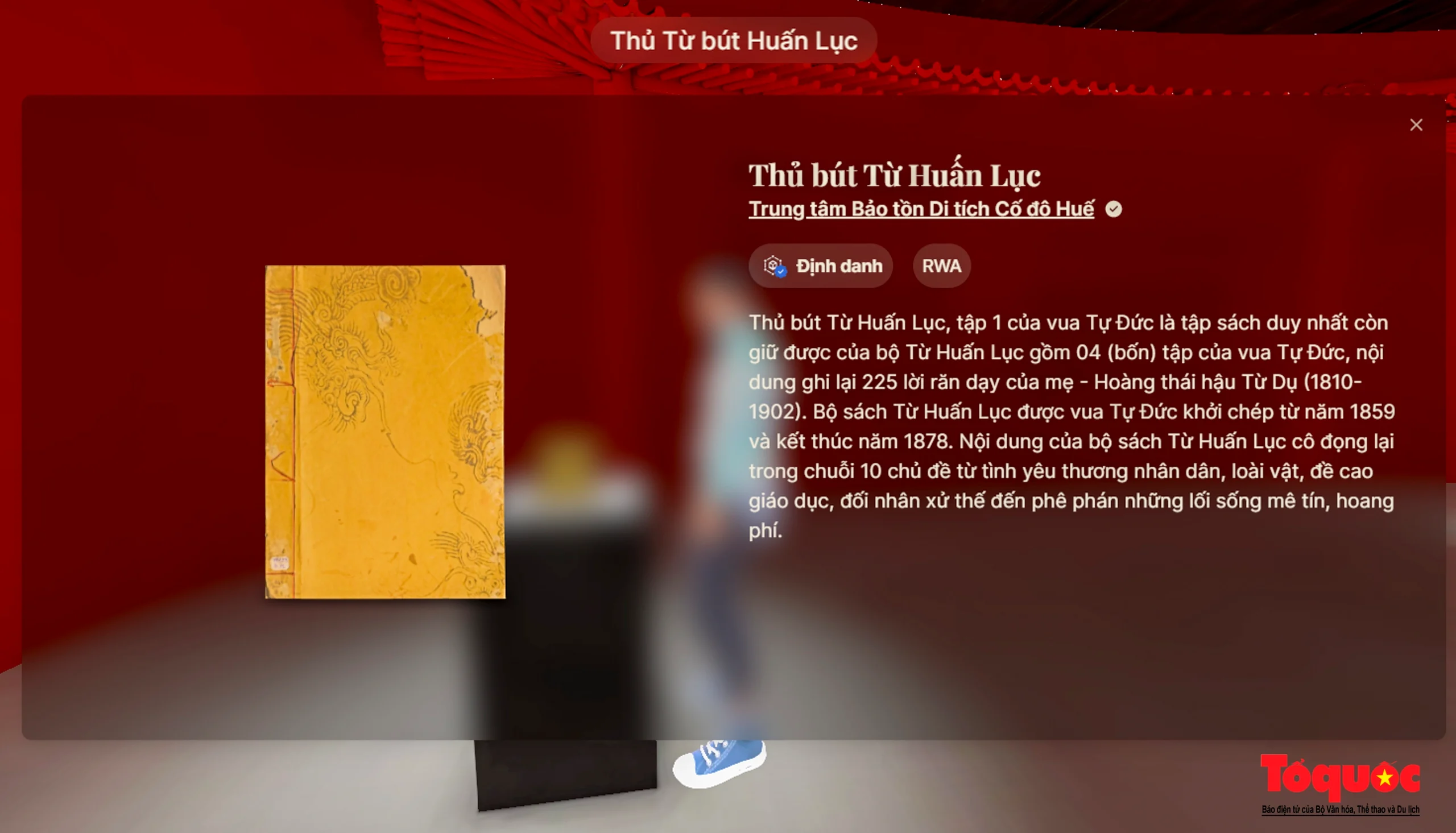
This digital space integrates Apple Vision Pro, leading the wave of extended reality technology (XR - Extended Reality) pioneered by Apple and Meta. From here, the vision of the Hue Monuments Conservation Center and Phygital Labs will be to provide Metaverse museum tours, promoting Vietnam through its heritage to global visitors. In the photo is "Tu Huan Luc's Handwriting", one of the first 10 artifacts of the Nguyen Dynasty that have just been identified and introduced in the digital cultural exhibition space.
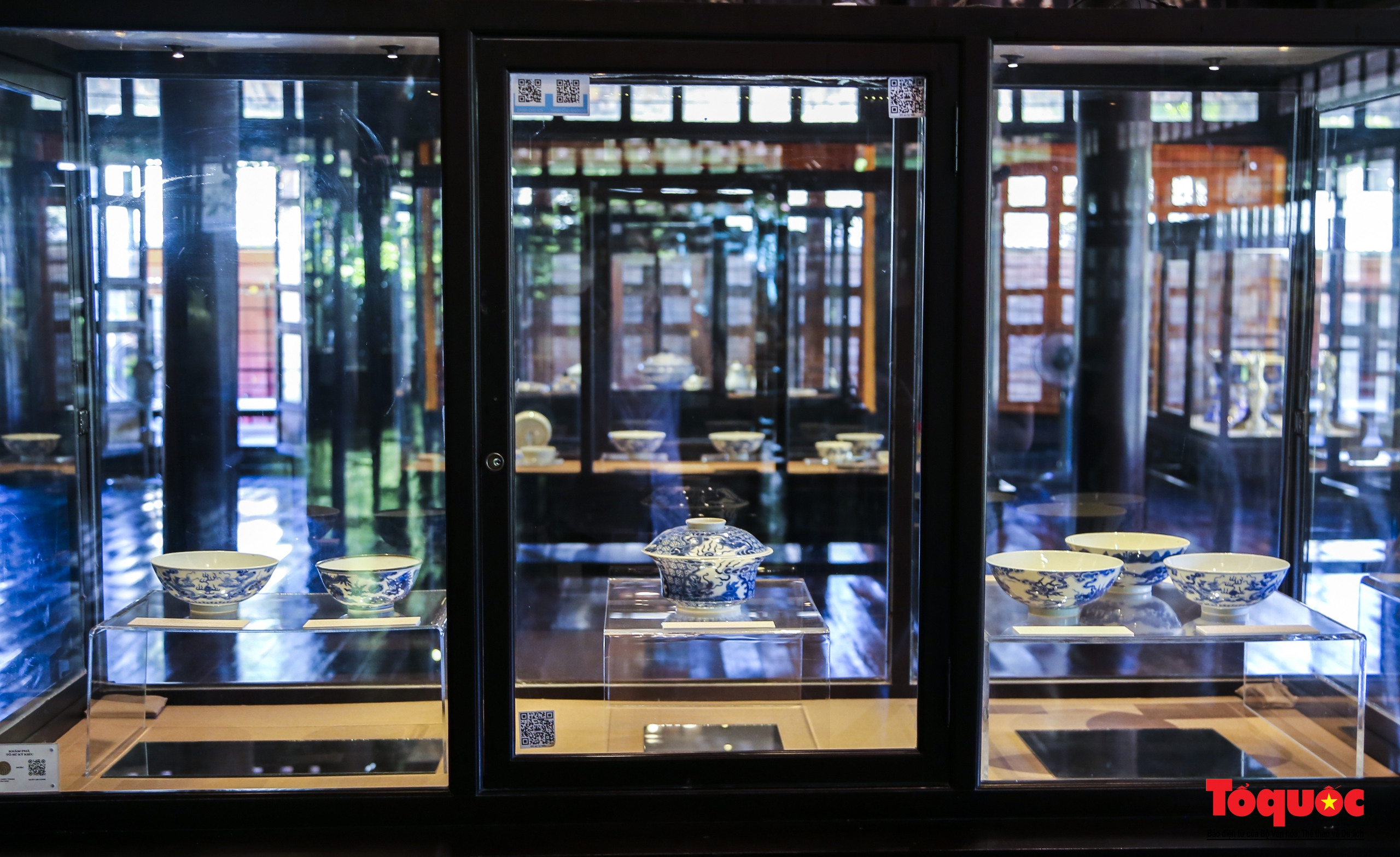
According to Mr. Hoang Viet Trung, Director of the Hue Monuments Conservation Center, Phygital Labs' technology is a bridge to bring preserved and displayed artifacts to the digital world , supporting the work of digitizing, preserving, and promoting the value of artifacts in particular and the heritage of the Nguyen Dynasty and Hue culture in general.
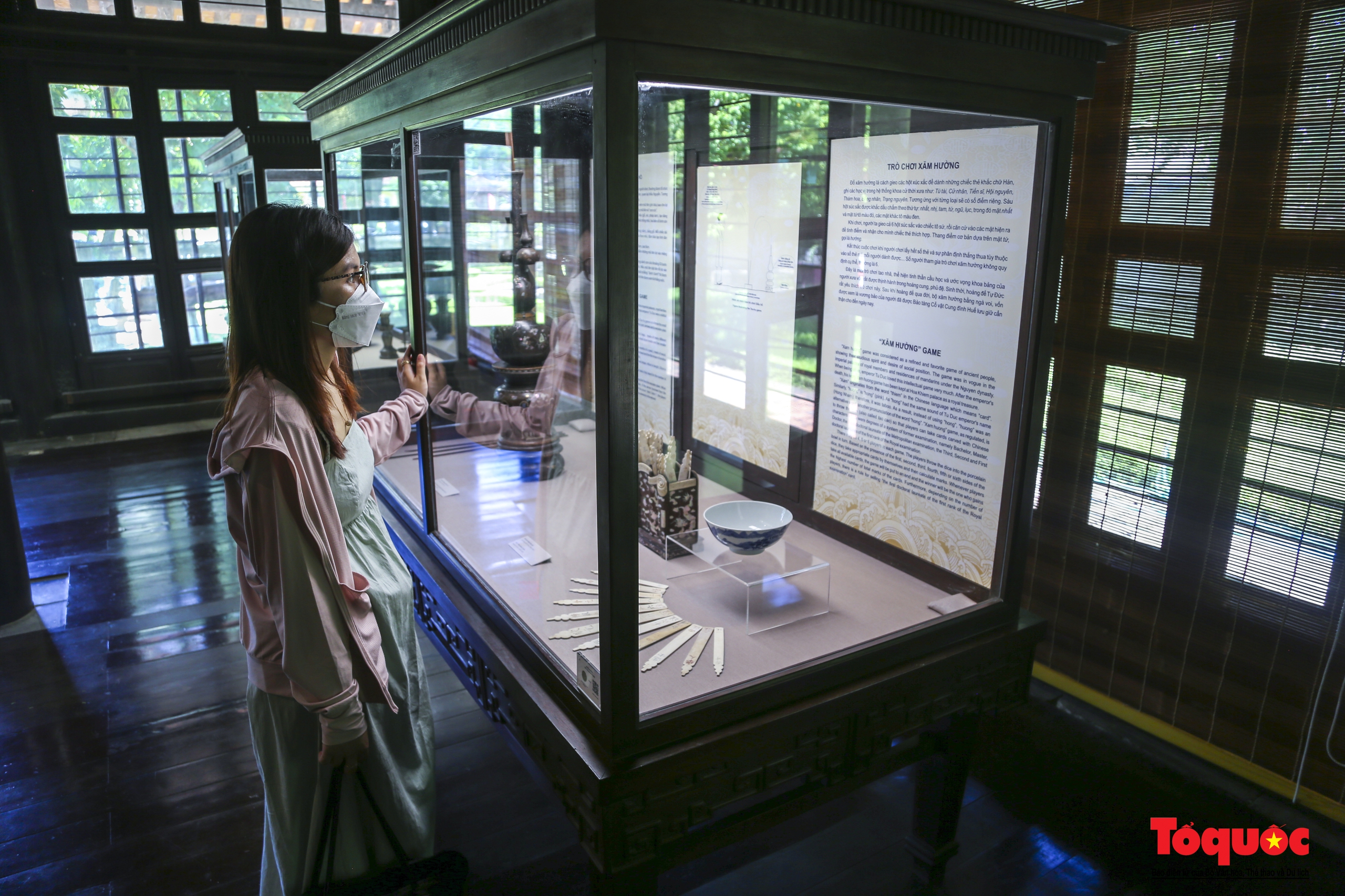
In the coming time, the Hue Monuments Conservation Center will continue to compile content as well as scan/take pictures of artifacts, aiming at digital museums by topic and time, helping global visitors to view and learn information with layout, color, and vivid sound similar to visiting a real museum or exhibition.
Source: https://toquoc.vn/kham-pha-loat-co-vat-quy-gia-cua-trieu-nguyen-lan-dau-duoc-dinh-danh-so-20240524173521605.htm


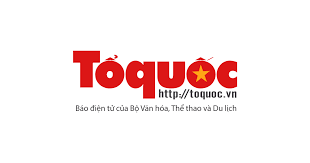


![[Photo] General Secretary To Lam attends the 80th Anniversary of the Cultural Sector's Traditional Day](https://vstatic.vietnam.vn/vietnam/resource/IMAGE/2025/8/23/7a88e6b58502490aa153adf8f0eec2b2)





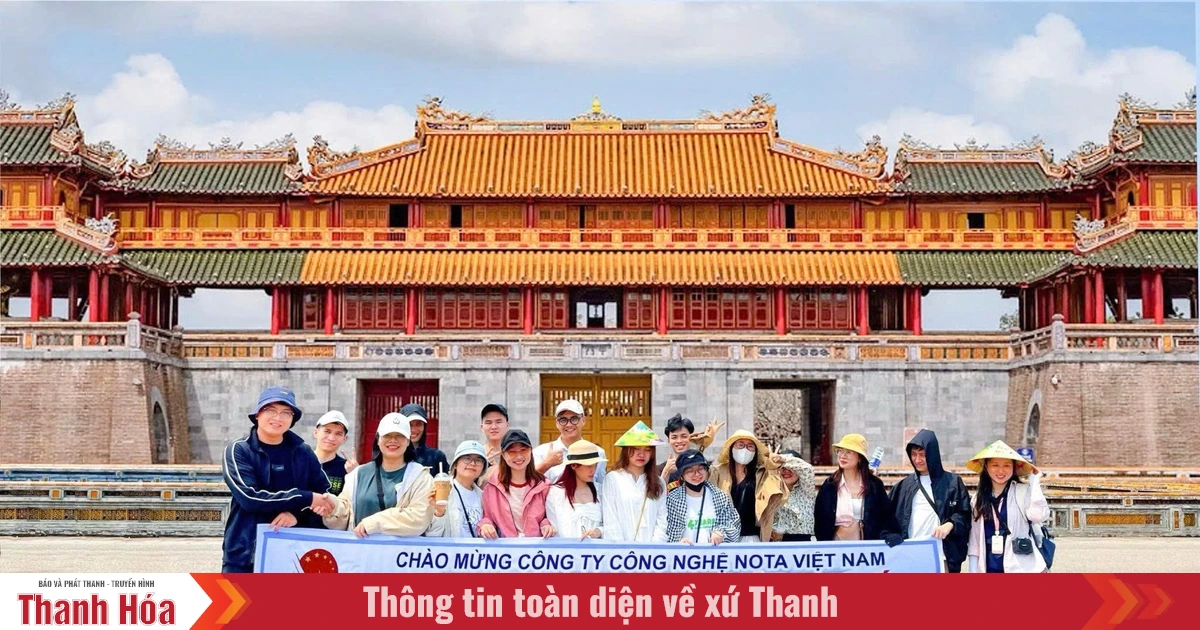




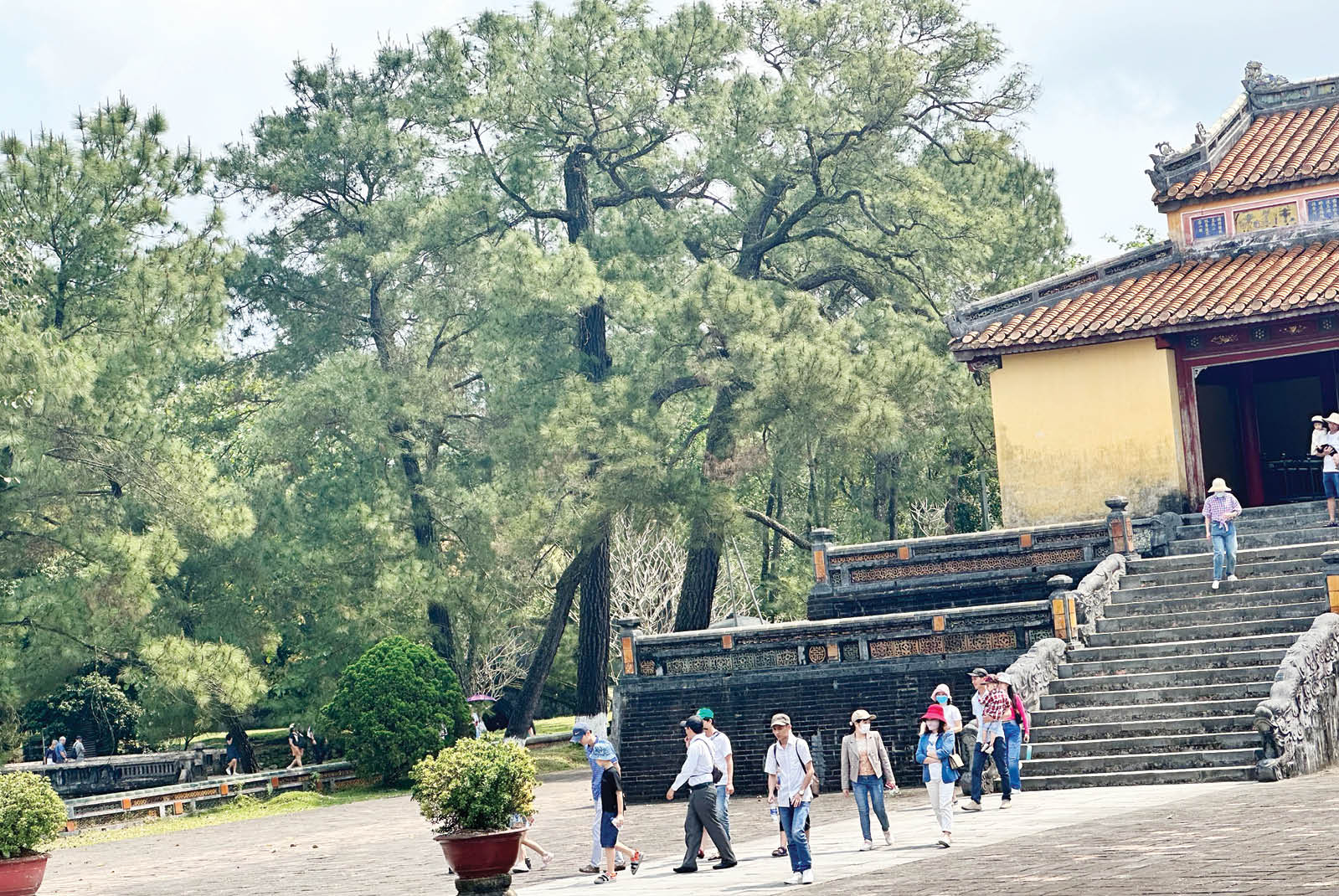

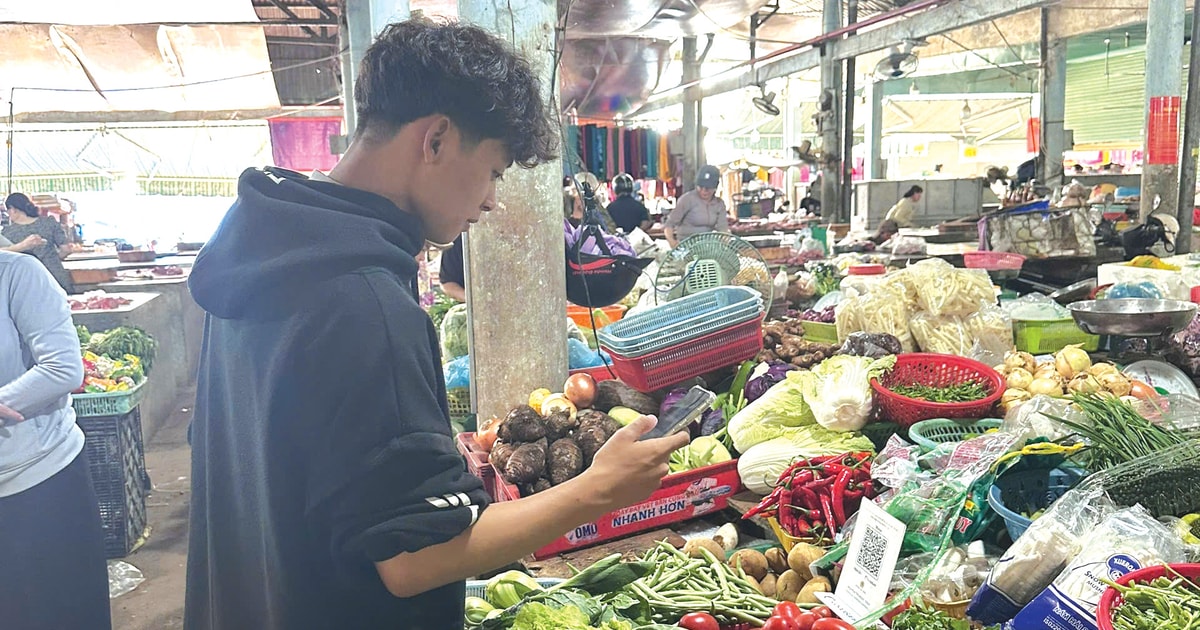



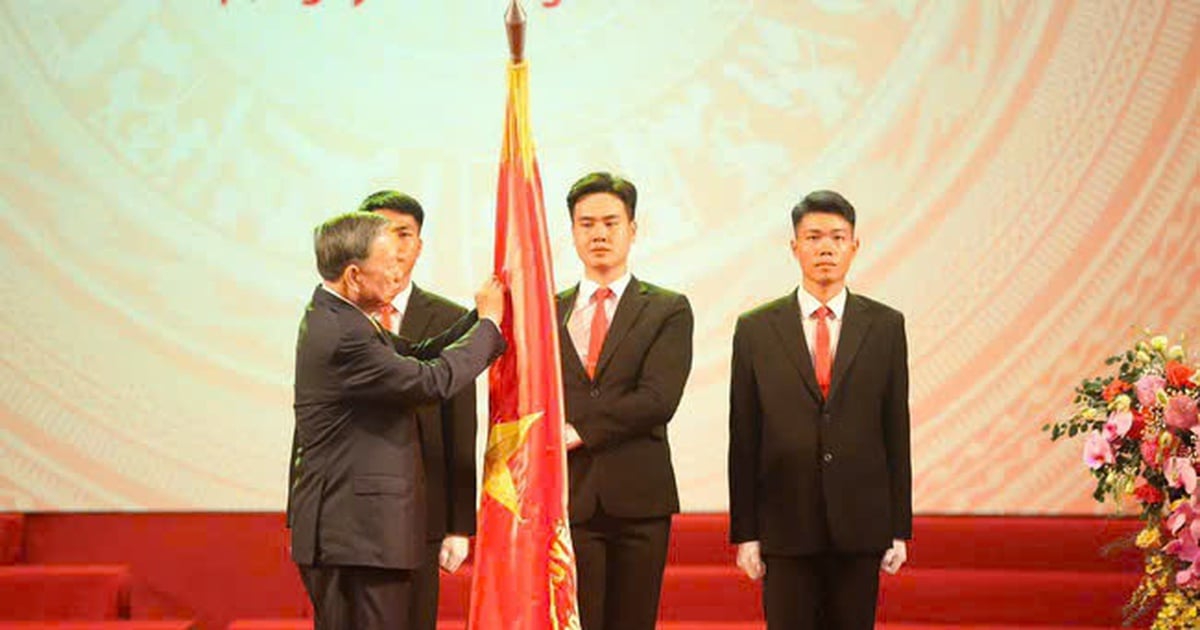












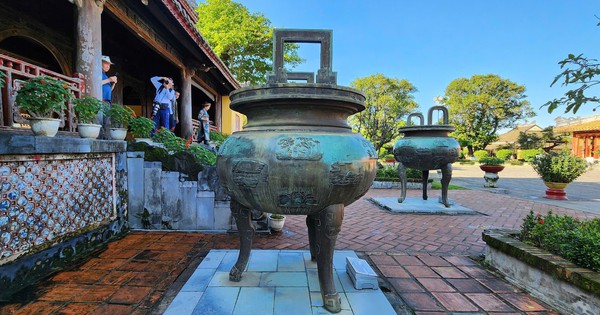
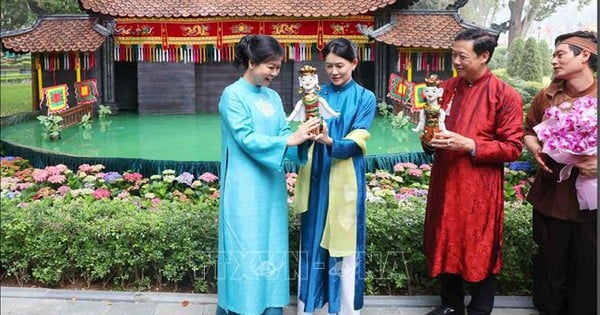
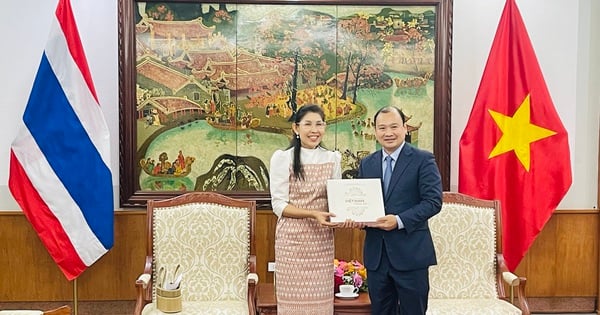
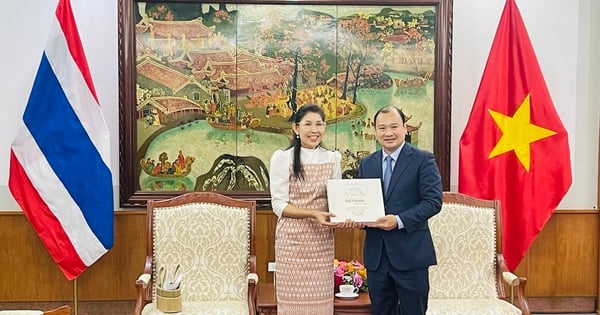












































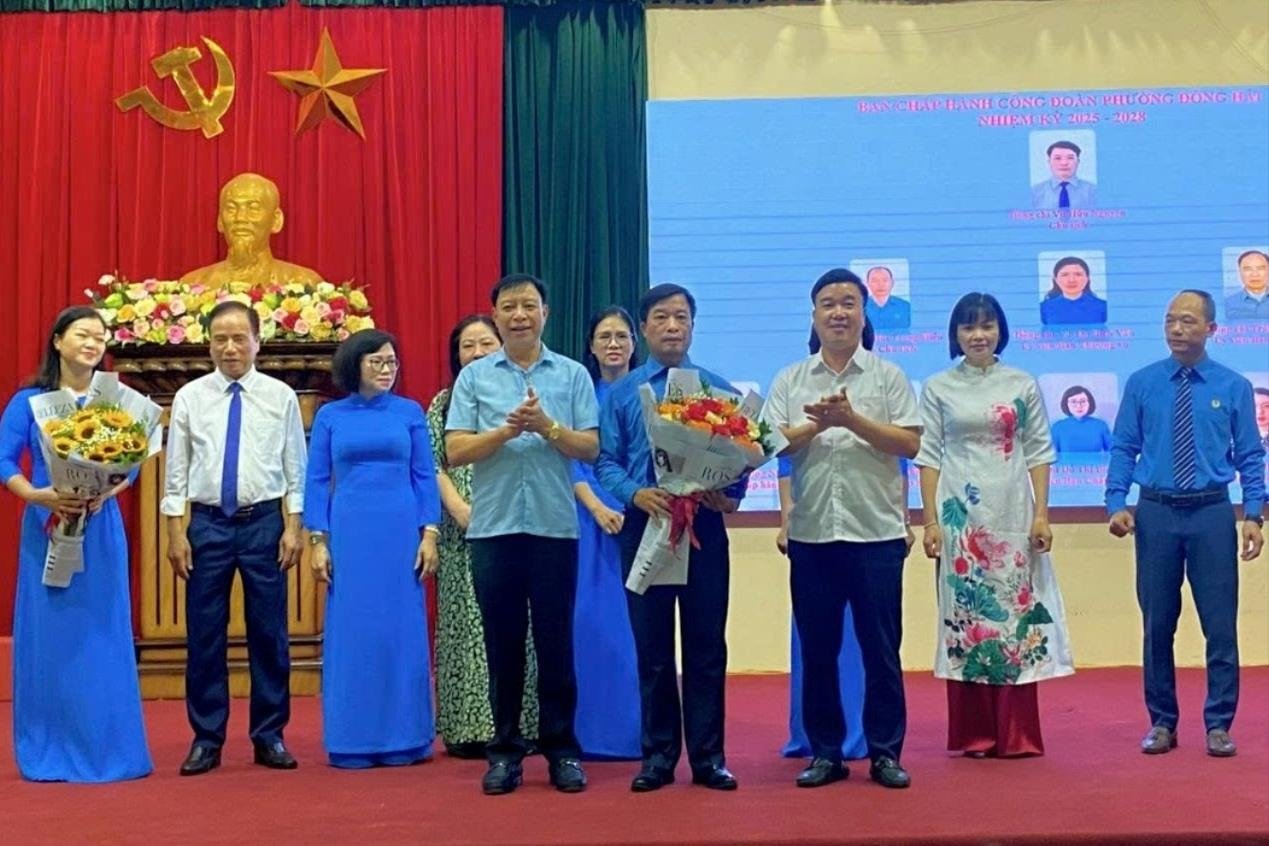



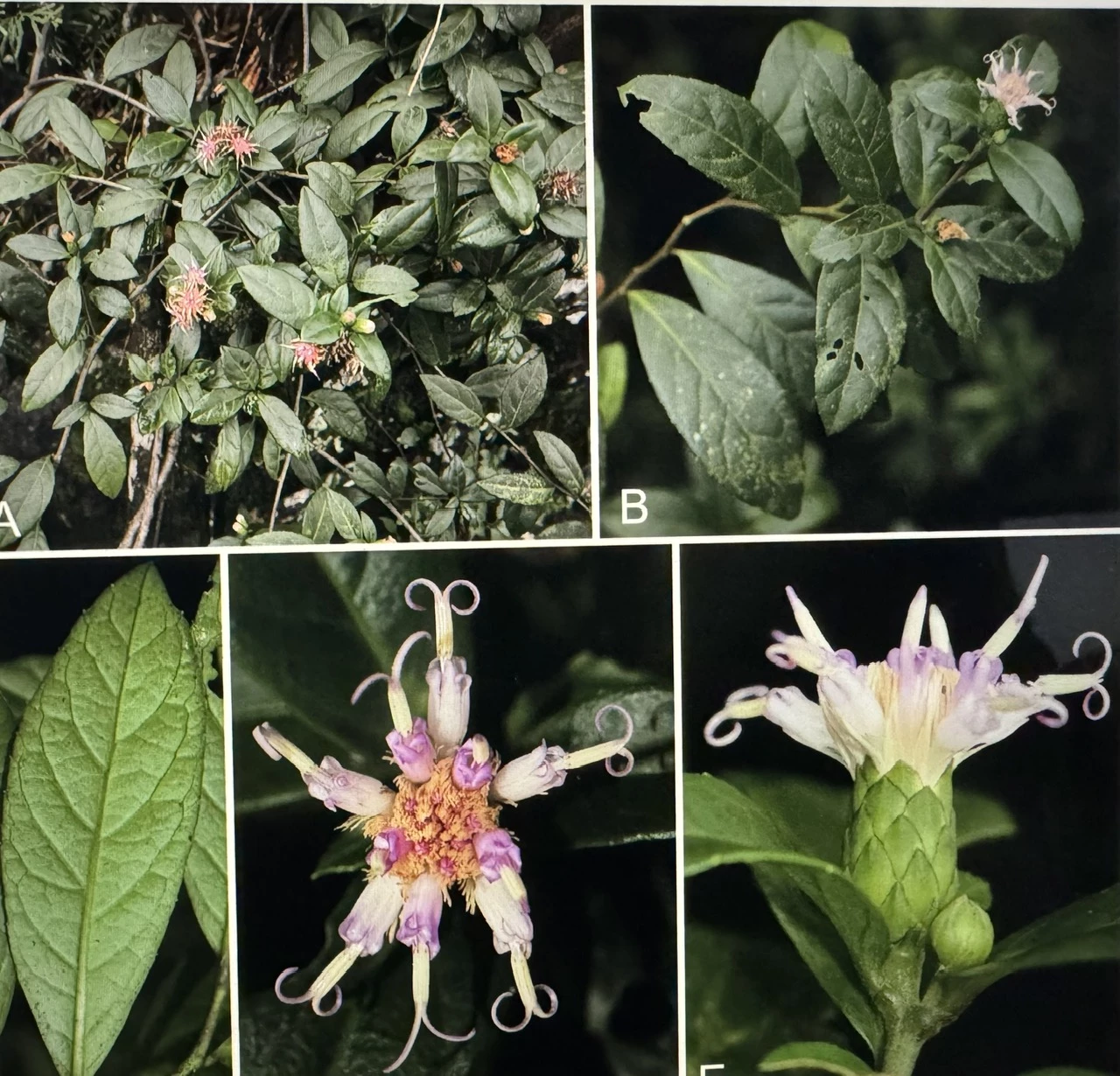

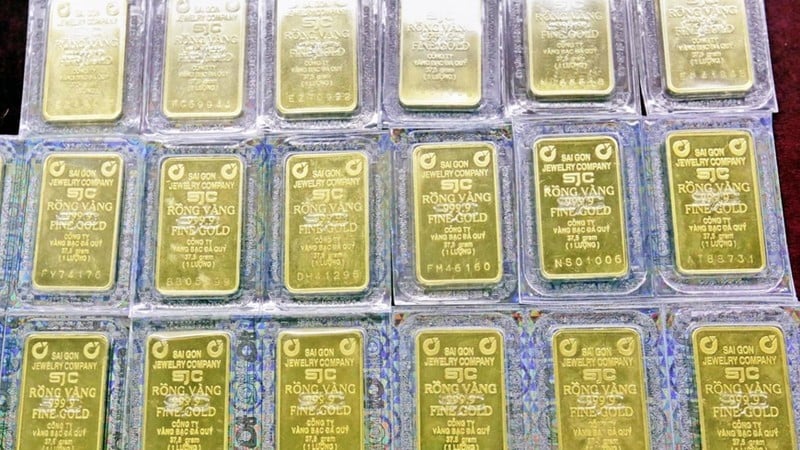

















Comment (0)